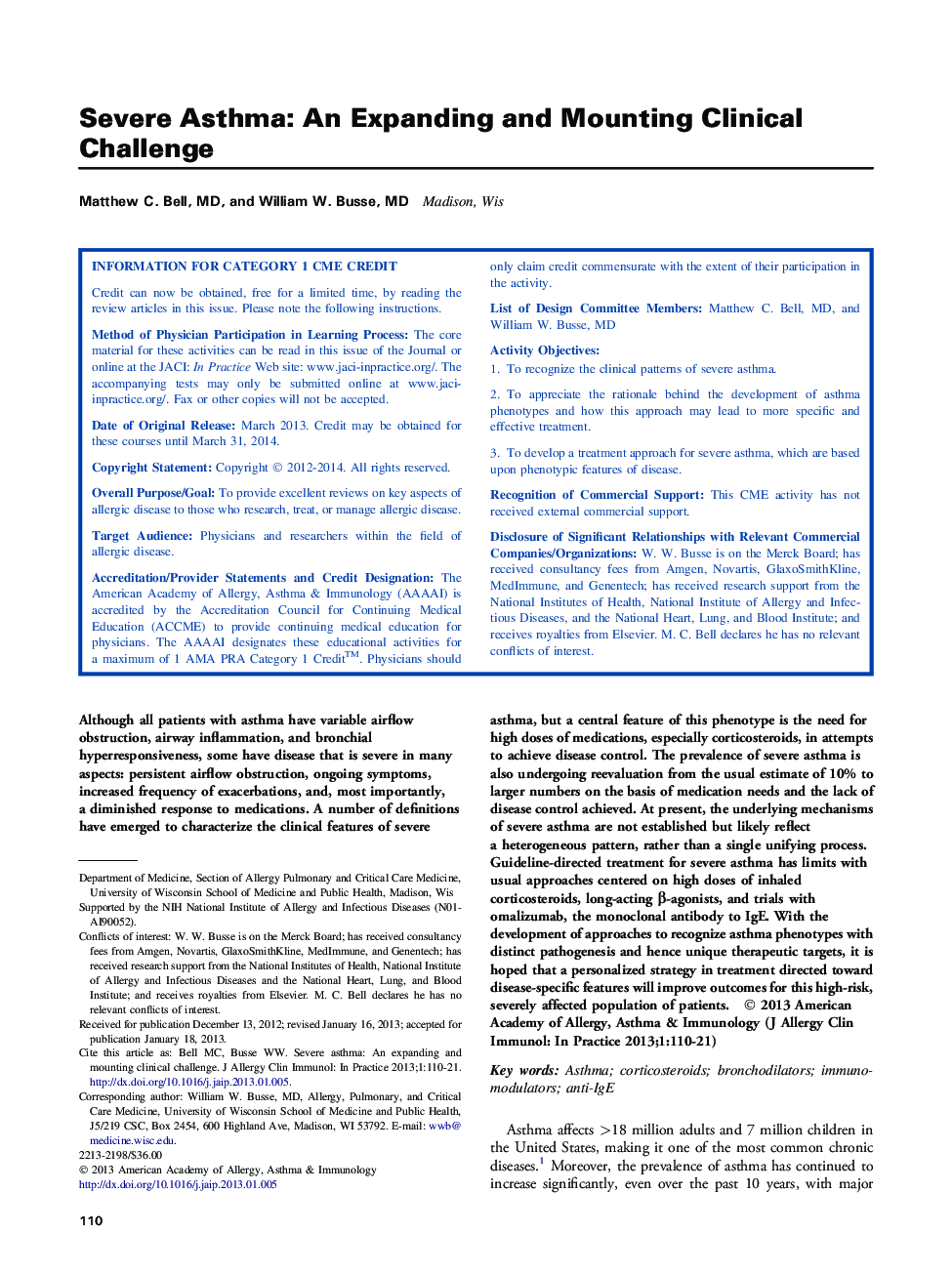| Article ID | Journal | Published Year | Pages | File Type |
|---|---|---|---|---|
| 3204236 | The Journal of Allergy and Clinical Immunology: In Practice | 2013 | 12 Pages |
Abstract
Although all patients with asthma have variable airflow obstruction, airway inflammation, and bronchial hyperresponsiveness, some have disease that is severe in many aspects: persistent airflow obstruction, ongoing symptoms, increased frequency of exacerbations, and, most importantly, a diminished response to medications. A number of definitions have emerged to characterize the clinical features of severe asthma, but a central feature of this phenotype is the need for high doses of medications, especially corticosteroids, in attempts to achieve disease control. The prevalence of severe asthma is also undergoing reevaluation from the usual estimate of 10% to larger numbers on the basis of medication needs and the lack of disease control achieved. At present, the underlying mechanisms of severe asthma are not established but likely reflect a heterogeneous pattern, rather than a single unifying process. Guideline-directed treatment for severe asthma has limits with usual approaches centered on high doses of inhaled corticosteroids, long-acting β-agonists, and trials with omalizumab, the monoclonal antibody to IgE. With the development of approaches to recognize asthma phenotypes with distinct pathogenesis and hence unique therapeutic targets, it is hoped that a personalized strategy in treatment directed toward disease-specific features will improve outcomes for this high-risk, severely affected population of patients.
Keywords
EMTUICSATSSARPABPASABAFeNONHLBIAsthmaAllergic bronchopulmonary aspergillosisLong-acting β2-agonistShort-acting β2-agonistAmerican Thoracic SocietyImmunomodulatorsSevere Asthma Research ProgramBronchodilatorsFraction of exhaled nitric oxideWorld Health OrganizationLABAanti-IgEGlobal Initiative for AsthmaNational Heart, Lung, and Blood InstituteWHOCorticosteroidsInhaled corticosteroidGINA
Related Topics
Life Sciences
Immunology and Microbiology
Immunology
Authors
Matthew C. MD, William W. MD,
